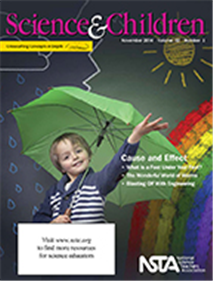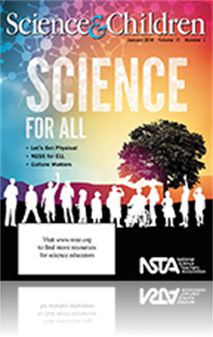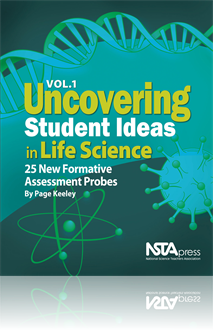All Crosscutting Concepts resources
Journal Article
The Early Years: Cause and Effect: Where's the Evidence?
This column discusses resources and science topics related to students in grades preK to 2. This month’s issue addresses the crosscutting concept of cause and effect as the column editor views it from her work with children ages 2–8....
Journal Article
Science 101: How Do We Determine "Cause and Effect?"
This column provides background science information for elementary teachers. This month’s issue discusses how cause and effect relates to science instruction....
Journal Article
Editor's Note: Crosscutting Concepts: Patterns
Science and Children’s editor shares thoughts regarding the current issue....
Journal Article
The Early Years: Shape Exploration: Another Dimension
This column discusses resources and science topics related to students in grades preK to 2. This month’s issue explores three-dimensional shapes....
NSTA Press Book
Translating the NGSS for Classroom Instruction
With the release of the Next Generation Science Standards (NGSS), you need a resource to help you answer pressing questions about how the standards fit with your curriculum, instruction, and assessments. Rodger W. Bybee has written Translating the NG...
By Rodger Bybee
NSTA Press Book
Science Stories: Using Case Studies to Teach Critical Thinking
Stories give life and substance to scientific methods and provide an inside look at scientists in action. Case studies deepen scientific understanding, sharpen critical-thinking skills, and help students see how science relates to their lives. In Sci...
By Clyde Freeman Herreid, Nancy A. Schiller, Ky F. Herreid
Book Chapter
The purpose of this assessment probe is to elicit students’ ideas about the transfer of matter and energy in ecosystems. The probe is designed to reveal whether students recognize that only matter is cycled through an ecosystem. ...
NSTA Press Book
Exemplary Science for Resolving Societal Challenges
Amid a flurry of national standards and high-stakes assessments, it’s easy to overlook the curiosity and invention that is inherent to science and that should be central to any science lesson plan. Similarly, the connections between what students l...





